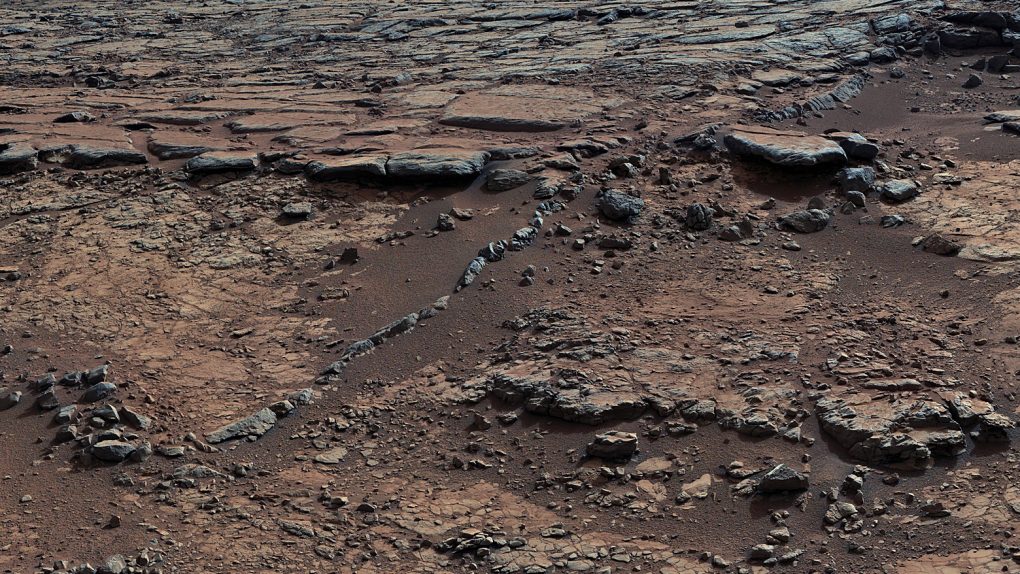The idea that Mars was once covered in vast oceans is a relatively new theory in the grand scheme of things, but the support evidence has piled up extremely fast. But if Mars was once a watery planet like Earth, where did all that H20 end up? Thanks to new data from NASA’s MAVEN spacecraft, scientists now think they’ve finally figure it out.
“We’ve determined that most of the gas ever present in the Mars atmosphere has been lost to space,” Bruce Jakosky, principal investigator of the MAVEN mission, explains. That lost gas — somewhere in the neighborhood of 65% — greatly depleted the planet’s atmosphere, causing oceans, lakes, and rivers to dry up as the vital elements were swept away into space by intense radiation and solar wind.
The researchers were able to make this determination based on the amount of argon, a noble gas, remains in the Martian atmosphere as compared with the levels that are believed to have once existed there. Atmospheric molecules are thought to have been slowly stripped away over time due to a process known as “sputtering” in which radiation and solar wind from the sun bump, knock, and drag them away from the planet.
If life did indeed exist on the surface of Mars at one time, NASA believes that the slowly depleting atmosphere — and the frigid temperatures in brought with it — would have gradually driven it to live primarily underground or in smaller habitable pockets tucked away around the planet. If we’re lucky, maybe there’s a race of hyper-intelligent mole people still living there.








